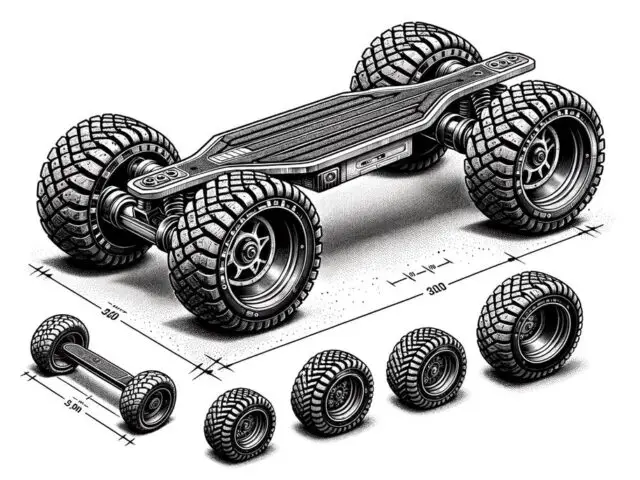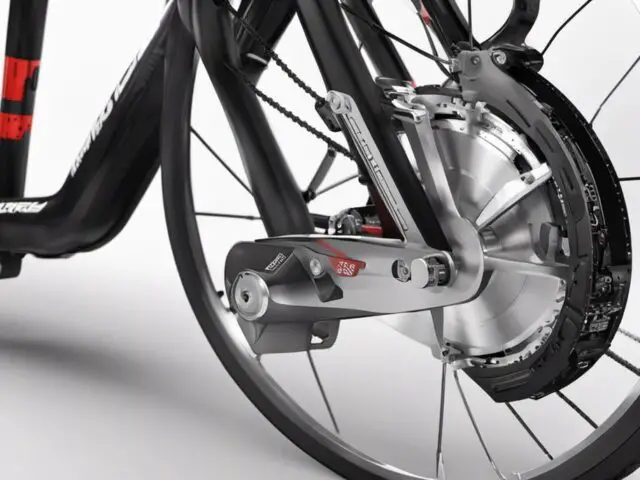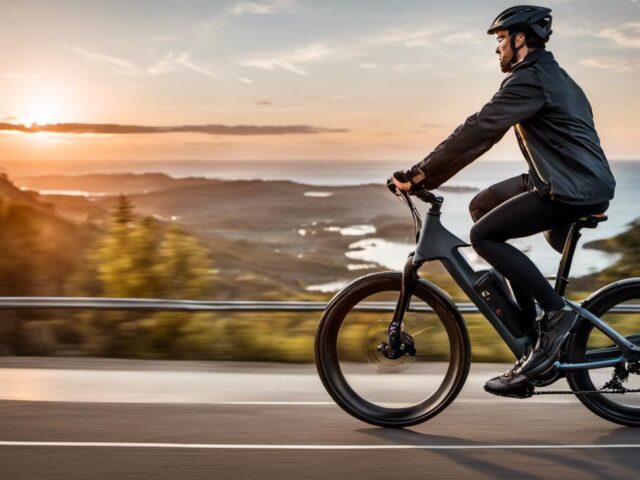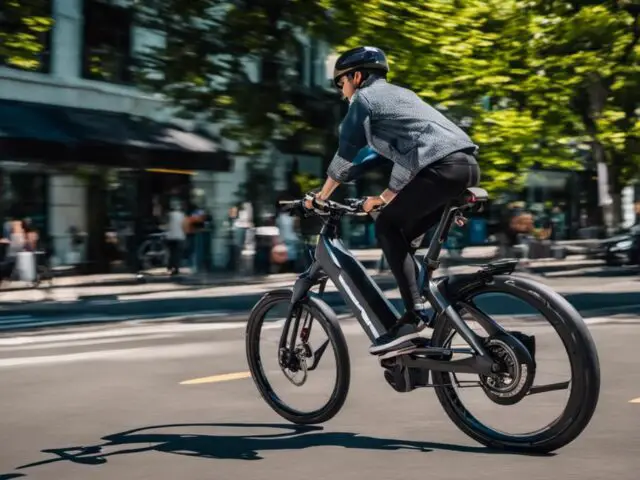Harnessing the power of modern technology, e-bikes are becoming an increasingly popular transportation tool in our day-to-day lives. The beauty of these advanced bicycles lies in how they seamlessly combine human power with electrical energy, providing an eco-friendly, efficient, and convenient mode of mobility. Understanding the science and technology that power these e-bikes can demystify their workings and help individuals appreciate and utilize them optimally. This deep dive covers the essential aspects of e-bikes, their vital components, their efficiency compared to traditional bicycles, relevant regulations, and safety measures associated with their use – all presented in a way that is comprehensive yet easy to grasp for a general reader.
Understanding the Basics of E-Bikes
Shifting gears into the forefront of modern transportation, e-bikes effectively combine the health benefits of pedal power with the convenience of electric speed. Defined simply, an e-bike or electric bike is a bicycle integrated with an electric motor providing pedal assistance to the rider.
But what makes an e-bike tick? What goes into this seamless combination of human and electronic power? Delving beneath the surface, we discover a fascinating blend of technologies working together to reimagine the good old bicycle.
The Heart of an E-Bike: The Electric Motor
The remarkable element that sets e-bikes apart from conventional bicycles is the electric motor. This nifty gadget offers multiple engagement options – Pedal Assist (PAS), throttle-controlled, or a combination of both. In PAS mode, onboard sensors gauge the rider’s pedaling effort and control the motor assistance accordingly, saving battery life while balancing exertion and speed. Meanwhile, throttle-controlled e-bikes work similarly to scooters, providing power directly at the twist of a handle, allowing one to cruise without pedaling.
Then there’s the power. Motors tend to range from 250W to 750W. Higher wattage equals higher top speeds and more push when climbing hills, but also chew up more battery life. It’s imperative to balance power needs with battery sustainability.
The Juice: E-Bike Battery
Powering the electric motor is the e-bike’s lithium-ion battery, often deftly hidden within the bike frame for balanced weight distribution. Batteries are generally rated by voltage and amp-hours, figures that jointly determine the e-bike’s ‘watt-hours,’ a parameter expressing the total energy the battery can deliver. The higher the watt-hours, the longer the range, i.e., the distance an e-bike can cover on a single charge.
The Brains: E-Bike Controller
Instrumental to harmonizing the battery, motor, and the rider’s efforts is the e-bike controller, a smart electronic device often attached to the handlebars for easy access. Controllers allow riders to adjust the level of motor assistance, monitor battery life, and, on some models, even choose between various ride modes for different terrains.
Seamlessly Linking it All: Sensors
Rounding off the technology roster are the sensors—essential components communicating between the rider’s actions and the electric motor. Cadence sensors detect when the pedals are turning, triggering the motor. Torque sensors gauge the force being applied to the pedals, feeding the data to the motor for proportional assistance, thereby achieving a more ‘natural’ feel.
Embracing efficient design, advanced tech, and eco-consciousness, e-bikes offer an irresistible alternative for commuting, exercising, or simply enjoying a leisurely ride. Striking a balance between human effort and electric help, they’ve revolutionized personal mobility. So, hop onboard, and glide into the future with these tech-savvy two-wheelers – After all, why pedal harder when you can pedal smarter?

The Benefit Of E-Bikes
E-bikes, or electric bicycles, offer a wide range of benefits that make them an attractive mode of transportation and leisure for individuals of varying fitness levels and transportation needs. Here are some of the key benefits of e-bikes:
- Assisted Pedaling:
- E-bikes feature electric motors that assist riders while pedaling, reducing the physical effort required to ride. This assistance can be customized based on rider preferences and needs, making cycling more accessible to a broader range of people.
- Enhanced Range and Speed:
- E-bikes allow riders to cover longer distances and maintain higher speeds with less effort. This is especially beneficial for commuting or recreational rides, as it reduces travel time and effort.
- Improved Fitness:
- Contrary to the misconception that e-bikes are entirely effortless, riders still engage in physical activity. They can choose to pedal more or less, depending on their energy level and fitness goals. This can lead to improved cardiovascular health, muscle tone, and overall fitness.
- Hill Climbing and Headwinds:
- E-bikes are excellent for tackling challenging terrain like steep hills and headwinds. The electric motor provides assistance, making these difficult conditions more manageable.
- Alternative to Cars:
- E-bikes offer an eco-friendly and cost-effective alternative to traditional cars for commuting and short trips. They reduce the carbon footprint and help alleviate traffic congestion.
- Cost Savings:
- E-bikes are more affordable to purchase and maintain compared to cars or motorcycles. They require no gasoline, and the cost of electricity to charge the battery is minimal. Maintenance costs are generally lower as well.
- Accessibility:
- E-bikes make cycling accessible to a wider demographic, including older adults and individuals with physical limitations. They enable people who might not have considered traditional biking due to age or fitness levels to enjoy the benefits of cycling.
- Reduced Sweat and Odor:
- For commuters, e-bikes can be a more practical option because they reduce the amount of sweating during rides, which can be important when going to work or social events.
- Time Efficiency:
- E-bikes can save time during commutes, as they allow riders to maintain a consistent speed, avoid traffic congestion, and often take shortcuts through bike lanes and paths.
- Fun and Enjoyment:
- Riding an e-bike can be an enjoyable experience. The combination of pedal assistance, reduced effort, and the feeling of wind in your hair can make every ride feel like an adventure.
- Health Benefits:
- While e-biking may require less physical exertion than traditional biking, it still provides health benefits such as improved cardiovascular fitness, increased mobility, and reduced stress.
- Reduced Noise and Air Pollution:
- E-bikes are quiet and produce zero emissions, contributing to quieter, cleaner, and more sustainable urban environments.
- Parking and Storage:
- E-bikes are easier to park and require less storage space than cars. This can be especially valuable in densely populated urban areas.
E-bikes offer a versatile and sustainable transportation option with a wide range of benefits. They promote physical activity, reduce the environmental impact of transportation, and provide an efficient and enjoyable way to get around, making them an increasingly popular choice for commuting and recreation.

E-Bike Performance and Efficiency
Comparing E-Bikes and Traditional Bicycles: The Efficiency Face-Off
Stepping away from the nuts and bolts of e-bikes, the time has come to stack them against their traditional counterparts. What gives e-bikes the edge, and are they truly as efficient as one might assume? The key contributors to this debate revolve around the Pedal Assist System (PAS), the throttle of an e-bike, the drivetrain, and the integrated display units.
The Pedal Assist System (PAS), an ingenious technological marvel, significantly differentiates e-bikes from traditional bicycles. This intelligent system gauges the pedaling force exerted by the user and decides the equivalent level of assistance the e-bike should provide. This ensures an energy-efficient cycling experience where the electric bike complements the rider’s effort, contributing to an efficient journey.
It isn’t just the PAS, though. The throttle enhancing the power-oriented mode adds an upper hand to the e-bikes. While traditional bicycles provide only as much speed as the rider’s physical strength allows, the throttle on an e-bike allows for instant acceleration when needed. This is particularly useful in scenarios such as hill climbing or long-distance cycling, making rides less strenuous and more efficient.
Moving on to the drivetrain – this crucial component encompasses the chain, crankset, and derailleurs. While traditional bikes and e-bikes share similar drivetrain designs, e-bikes often use more robust components to handle the extra torque provided by the motor. This leaves e-bikes less likely to wear and tear, hence reducing frequent replacements, enhancing their overall efficiency, and edging out traditional bikes.
Last, but certainly not least, are integrated display units. These nifty devices are now more common on e-bikes, providing useful data such as speed, distance traveled, current gear, battery health, and even GPS navigation. This, in essence, leads to smarter, safer, and more efficient rides. Traditional bicycles, bereft of this feature unless manually added, lag behind in this comparison.
In summary, when pitted against traditional bicycles, e-bikes emerge as technologically superior, granting the rider a more efficient, less strenuous, and overall enhanced cycling experience. The amalgamation of the Pedal Assist System, throttle, sturdy drivetrain, and integrated display units makes sure of that, making e-bikes worthy of attention in today’s age of smart mobility. Let’s welcome this significant step towards convenient, green, and efficient transportation, ideal for the tech aficionado who enjoys staying at the forefront of innovation.

Understanding E-Bike Legislation and Safety
Shifting gears (pun intended) from the mechanics of e-bikes to the legal and safety aspect, it’s not just about high tech advancements and green mobility. Commanding an understanding of current regulations and safety measures for e-bike usage is of equal importance for devoted enthusiasts.
In the United States, e-bikes are subjected to a myriad of laws, both federal and state-specific. Federal law categorizes e-bikes as bicycles rather than motor vehicles, provided the e-bike’s motor is less than 750 watts (1 horsepower) and its max speed doesn’t exceed 20 miles per hour on level ground.
Yet, state laws exhibit great variability. Some states mimic federal law, while others impose restrictions such as age limits, mandatory helmet use, or specific path and road access rules. Therefore, it is essential that e-bike riders effectively interpret their local regulations to avoid unnecessary pitfalls.
When it comes to safety measures, prudence is key. Helmet usage is a universal recommendation, with some state laws making it mandatory. Quality helmets are designed to absorb impact and reduce the risk of serious head injuries in the event of an accident.
Visibility, too, is essential, especially for nighttime riders. Many e-bikes come equipped with integrated front and rear lights. For those that do not come pre-installed, aftermarket bicycle lights are practical and inexpensive.
E-bikes can achieve higher speeds than traditional bicycles, therefore, employing the use of a horn or bell to signal intentions may prevent mishaps. Similarly, the concept of defensive riding, such as anticipating the actions of drivers, other cyclists, and pedestrians, can keep you out of harm’s way.
Though they typically come installed, safety cut-off features are a must-have. These features automatically cut power to the motor when the brakes are applied or when the bike falls over, providing an added layer of rider safety.
Tech-based advancements such as GPS tracking and anti-theft locking mechanisms also offer security benefits, making e-bikes a safer option to traditional bikes in this regard.
In summary, while e-bikes symbolize a fusion of technology and sustainability, riding them safely while adhering to legal mandates should be a top priority. After all, the joy of cruising along on an e-bike with the wind in your hair is even better when you know you’re doing it responsibly.

E-Bike Market Trends and Future Prospects
Present market trends of e-bikes underscore a noteworthy shift; this is not just a passing fad, but a significant alteration in personal transportation. In 2020, the global e-bike market size was $23.9 billion and projections see it reaching a commanding $46.04 billion by 2026. Rapid urbanization, the need for fitness, and environmental consciousness are primary drivers of this explosion.
The trends in e-bikes are diverse. Lighter and more powerful batteries are in demand, compact designs are favored, and features such as foldable frames and integrated battery management systems are gaining popularity. There’s an increasing demand for e-bikes that offer speeds up to 28 mph. Smart e-bikes featuring connectivity with smartphones and the ability to monitor performance, track routes, and provide theft protection are on the rise.
E-Bikes and Sustainability
No discussion about e-bike trends would be complete without emphasizing their role in sustainability. E-bikes offer an immediate reduction in carbon emissions when compared to cars, a major selling point, especially for urban commuters. This shift towards e-bikes aligns perfectly with an increasing global emphasis on sustainability and zero emissions.
Future Trends – Predictions and Potential Developments
The inevitable question about what comes next triggers thrilling speculation. The future holds advancements in battery technology, bringing us lighter, safer, longer-lasting lithium-sulfur batteries that will revolutionize e-bikes. Simultaneously, breakthroughs in supercapacitors present a potential game-changer with their high power density and the ability to charge in minutes.
The advent of AI in e-bikes can also be anticipated. Deep learning algorithms will be used to enhance the cycling experience by providing seamless PAS responses and even predicting maintenance needs. Furthermore, expect to see even more integrated features, like HUD displays in helmets for real-time monitoring, and advancements in theft deterrence through biometric locks.
Challenges Facing the E-Bike Industry
Every industry faces challenges and e-bikes are no exception. The primary concern revolves around regulations. These vary significantly around the globe, creating complexity for manufacturers and consumers alike. A standardized regulatory structure can accelerate adoption rates, benefiting both the industry and the environment.
Moreover, safety concerns can potentially impede the e-bike market. Industry-wide safety measures – stronger frames, improved braking systems, and better visibility features – are anticipated and will be crucial for further market penetration.
Conclusion
The market trends and future of e-bikes exemplify innovation and technological advancement at work to solve real-world problems. Incorporating mission-critical requirements such as sustainability, efficiency, fitness, and connectivity, this market couldn’t be more aligned with the zeitgeist of the 21st Century. Despite challenges, the future remains bright for e-bikes as technology and regulations evolve to meet consumer needs, making our world greener and more connected.

With technology advancing at an unprecedented pace, the landscape for e-bikes is changing rapidly. The trends indicate a growing interest in these alternative transportation machines, demonstrated by increasing sales and evolving consumer preferences. As regulations catch up with technology, it becomes critical for potential users to stay informed about the current and upcoming trends in the market. The future of e-bikes looks promising, with scope for further advancements, especially in terms of efficiency, speed, and environmental impact. Knowledge about these aspects can help one make an informed decision when choosing a sustainable and efficient mode of transportation, thereby participating in reshaping our future transportation paradigm for better environmental stewardship.
Helpful Links
For all your RC Questions, Click HERE
If you are interested in RC cars and trucks, RC World has you covered.
For RC boats and watercraft, check these articles out.
For all your RC Airborne endeavors, we have everything you need.
Night Skate: Safe Electric Boarding Tips
Riding an electric skateboard at night brings its own set of challenges and safety concerns. This article aims to shed light on the essential gear and practices needed…
Choosing Your Off-Road E-Skateboard Wheels
Finding the right wheel size for your off-road electric skateboard is crucial for a top-notch riding experience. This article discusses the importance of wheel dimensions, motor power, rider…
Unplug and Recharge: Guide to E-Bike Camping
E-bikes, with their sustainable, efficient, and exhilarating mode of travel, have revolutionized the outdoor experience, notably camping. This revolutionary facet of outdoor exploration has catered to the adventurous…
Maximize E-Biking With Torque Sensors
E-bikes have become increasingly popular in recent years for their ability to provide a fun and eco-friendly mode of transportation. However, many riders may feel that their e-bike…
Why RC Is So Expensive [ Hobby Guide For Newbies ]
I personally love RC cars, and this is an old hobby of mine. But there is a con of having RC cars as a hobby. That is, RC…
14 Surprising Ways Electric Biking Enhances Your Fitness
Embracing a new wave in the sphere of fitness and health, electric bikes have become prominent as one of the most enjoyable and advantageous ways to enhance personal…
Exploring the Magic of Drone Light Shows
In the bewitching cloak of darkness, the skylines of our cities are increasingly being illuminated by the mesmerizing spectacle that is drone light shows. Through the novel fusion…
Mastering E-Bike Collision Avoidance Tech
As we careen into an era where technology sits at the forefront of almost all aspects of our lives, not least in the realm of personal transportation, e-bikes…
Why Does My Remote Control Vehicle Have a Mind of Its Own?
I loves remote control vehicles growing up and would run them until they broke in most cases, Washington state is wet and thats a bad combo for a…










